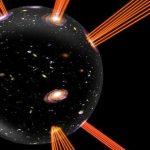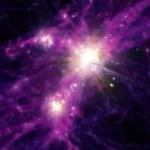Key Takeaways:
- Amateur Astronomer’s Triumph: Amateur astronomer Kōichi Itagaki made a groundbreaking discovery when he spotted a dying star in the Pinwheel Galaxy that would later go supernova.
- Proximity Matters: This star, labeled SN 2023ixf, was just 20 million light-years away from Earth, allowing scientists a rare opportunity to study a supernova in its early stages.
- Unusual Mass Loss: Observations of SN 2023ixf revealed that it had shed an astonishing amount of mass, roughly equivalent to the mass of our sun, in the year leading up to its explosive death.
- Missing Shock Breakout: Unlike typical type II supernovae, SN 2023ixf did not exhibit the expected “shock breakout” in its light curve immediately after the explosion, raising intriguing questions about its behavior.
- Amateur Astronomers Make an Impact: Itagaki’s discovery highlights the invaluable contributions of amateur astronomers in advancing our understanding of the universe.
In a stunning celestial display, a dying star in the Pinwheel Galaxy, known as SN 2023ixf, recently bid its final farewell by going supernova. This remarkable event, spotted by amateur astronomer Kōichi Itagaki, promises to unveil previously unknown facets of the lives and deaths of massive stars.
Itagaki, renowned for his supernova discoveries, noticed the telltale signs of SN 2023ixf during his routine sky scans on May 19. Situated just 20 million light-years away in the Pinwheel Galaxy, this cosmic explosion offered astronomers a relatively close-up view of a massive star’s last moments, a precious opportunity in the field.
The timing of Itagaki’s discovery was crucial. Supernovae are notorious for being elusive, often escaping notice until several days after they’ve erupted. However, thanks to Itagaki’s vigilance, , presenting a prime specimen for in-depth examination.
Recognizing the significance of the find, postgraduate student Daichi Hiramatsu from the Harvard–Smithsonian Center for Astrophysics (CfA) quickly mobilized professional telescopes, including the 6.5-meter Multi-Mirror Telescope (MMT) in Arizona. They meticulously studied the supernova’s light spectrum and its evolution over subsequent days and weeks, creating a crucial “light curve.”

The spectral analysis confirmed that SN 2023ixf belonged to the category of type II supernovae, indicating it originated from a star with more than eight times the mass of our sun. Intriguingly, the light curve exhibited an anomaly: the anticipated flash of light resulting from the shock breakout was conspicuously absent for several days.
This delay in the shock breakout puzzled astronomers. Hiramatsu shed light on the mystery, suggesting that the delayed shock breakout provided direct evidence of substantial mass loss in the year leading up to the explosion. Astonishingly, the star had expelled a mass equivalent to that of our sun during its final year.
To visualize this, picture a massive, unstable star steadily shedding material from its surface, creating a cloud of ejected stellar matter surrounding it. When the supernova finally erupts, its shock wave not only bursts through the star’s core but also traverses this surrounding material. In SN 2023ixf’s case, this journey through the ejected matter caused the delayed shock breakout, a rare phenomenon.
This discovery challenges conventional wisdom. While massive stars often shed mass before their ultimate demise, the proximity of the ejected material to the star at the time of the explosion was unexpected. Normally, the ejected material would have moved further away, allowing for an immediate shock breakout. SN 2023ixf’s unique circumstances offered scientists a one-of-a-kind opportunity to witness this phenomenon up close.
Edo Berger, Hiramatsu’s supervisor at the CfA, furthered our understanding by observing SN 2023ixf with the Submillimeter Array in Hawaii, capturing the collision between the supernova shockwave and the circumstellar cloud. This data essentially turned SN 2023ixf into a time machine, providing insights into the star’s behavior leading up to its demise.

The question remains: what caused this unusual instability? One theory posits that the final stages of burning high-mass elements inside the star, particularly silicon, are disruptive, generating energy pulses that shake the star and expel material from its surface. This phenomenon, previously theoretical, is now observable thanks to SN 2023ixf’s proximity.
The story of SN 2023ixf underscores the critical role of amateur astronomers in advancing astrophysical knowledge. Itagaki’s dedication and vigilance led to this groundbreaking discovery, providing invaluable insights into the evolution of massive stars and their spectacular supernova explosions.
In recognition of his significant contributions, Itagaki is listed as an author on the paper detailing these results, published in The Astrophysical Journal Letters on September 19. This celestial event reminds us that the universe’s mysteries are often unraveled through a collective effort that bridges the gap between amateurs and professionals, bringing us closer to comprehending the vast cosmos that surrounds us.


